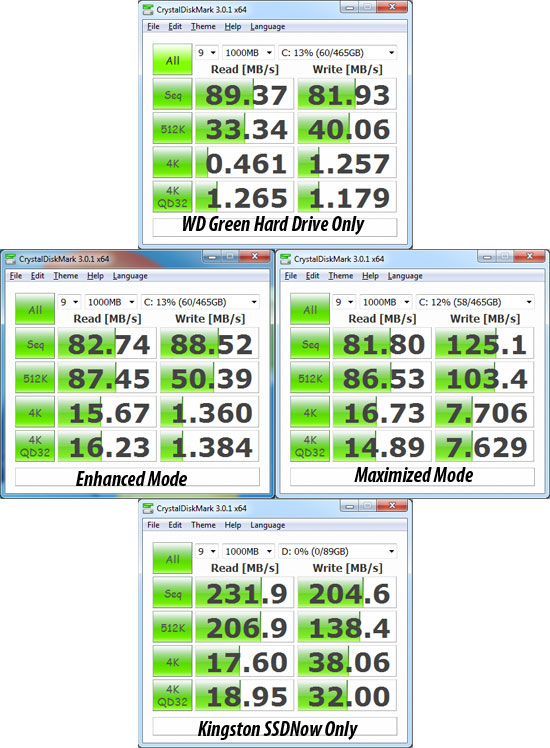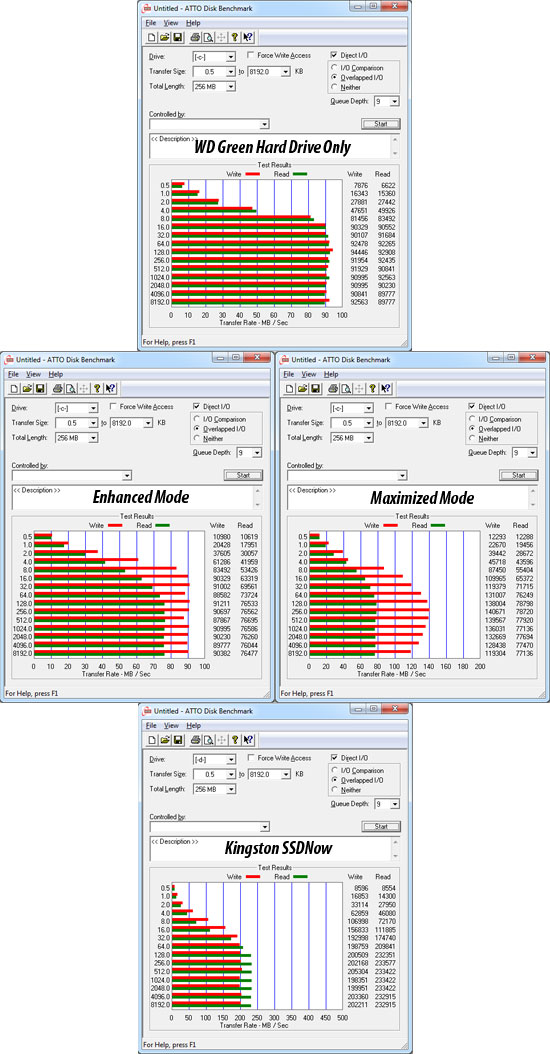GIGABYTE Z68X-UD7-B3 Intel Z68 Motherboard Review
GIGABYTE Z68X-UD7-B3 Intel RST Performance
The default setting of the Intel RST 10.5 software is enhanced mode, which only mirrors data to the hard drive. If the SSD ever fails you won’t lose any data as it is running like a RAID 1 array (mirroring) with only the most accessed data being copied into the cache. The other method is maximized mode, which is where performance is highly improved, but cached data may be lost in the event of hardware removal or hardware failure much like a RAID 0 array (striped) where one drive goes bad. For our testing today we used a Western Digital Green 500Gb hard drive and a Kingston SSDNow 100 96Gb SSD.

To see what kind of speeds boosts that we would see with SSD Caching enabled we first fired up CrystalDiskMark. The Western Digital Green hard drive actually took a hit in performance in the sequential read score dropping to 82.74MB/s in enhanced mode and 81.80MB/s in Maximized mode from 89.37MB/s when it was the HDD alone. The rest of the scores went up considerably. The 512K read scores jumped from 33.34MB/s up to 87.45MB/s and the write speeds increased from 40.06MB/s to 50.39MB/s. The 4K read speeds went up almost to the point of the SSD alone. The Kingston SSD had a 4K read of 17.6MB/s and the WD Green hard drive and SSD combo had a speed of 15.57!

When we fired up ATTO Disk Benchmark we saw very little performance gains in Enhanced mode, the only area that saw any improvement was the smaller file sizes. Once we got into larger file sizes, the write rates were comparable with the performance of the Western Digital Green hard drive alone, while our read rates took a significant hit in performance. Maximized mode saw a significant boost in write speed, but the read speeds were once again mostly below that of the hard drive alone.

Comments are closed.